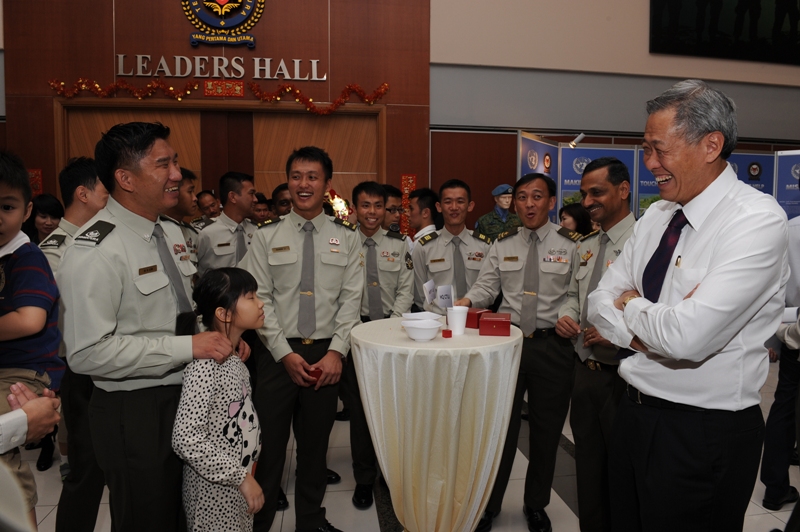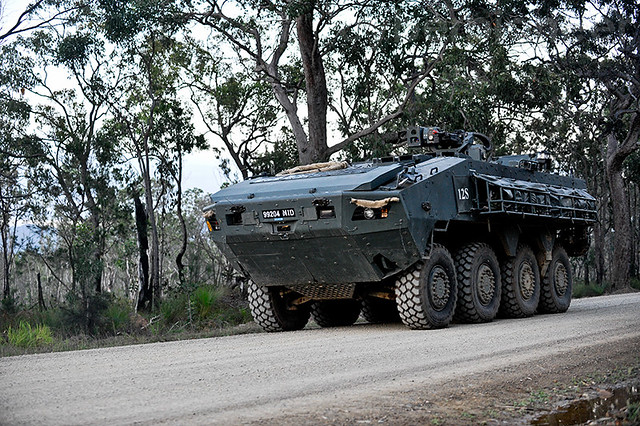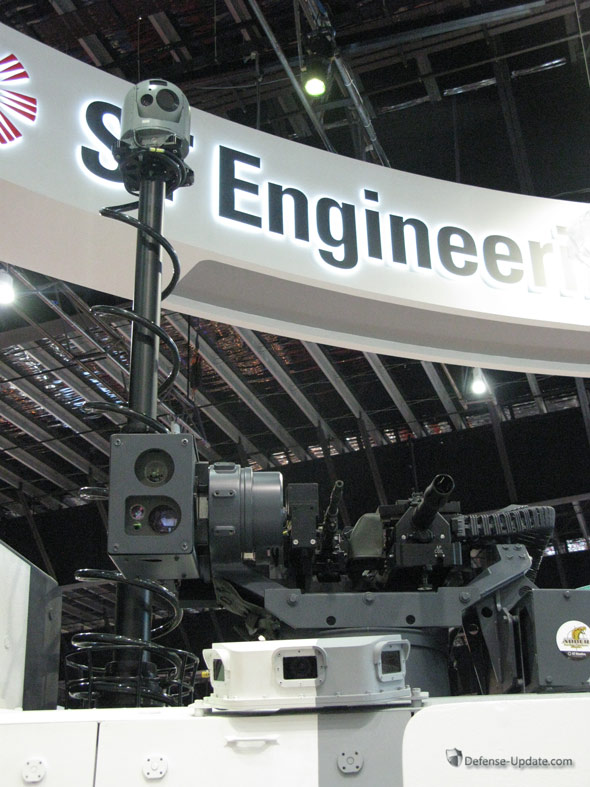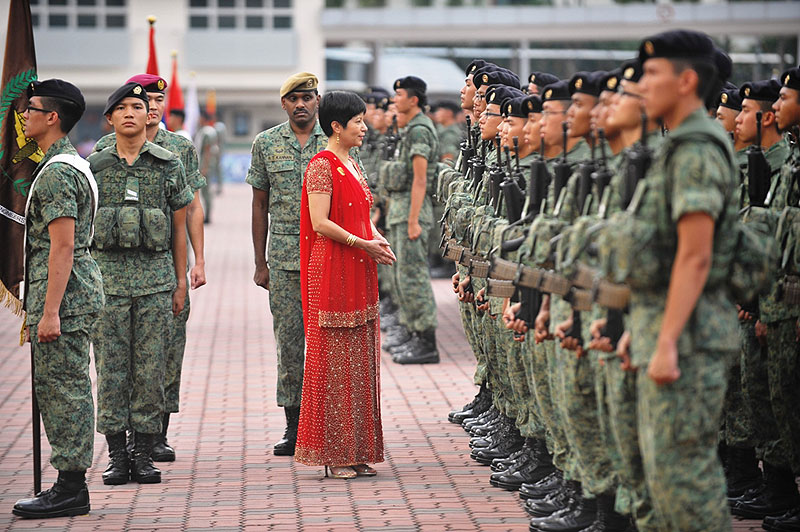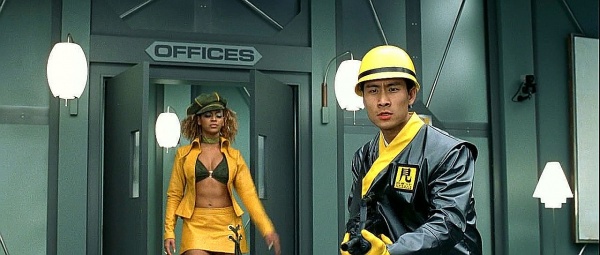- Thread Starter Thread Starter
- #41
Exercise Daring Warrior 2012 (Army News: Dec 2012 Issue, pages 10-14)
From 16 October to 4 November, the HIMARS operators of 23rd Battalion, Singapore Artillery (23 SA) showed their mettle at Exercise Daring Warrior 2012 held in Fort Sill, Oklahoma - the third HIMARS live-firing exercise conducted since the platform was delivered to the SAF in 2010. Exercise Daring Warrior was valuable opportunity to learn from and train with the US Armed Forces.
[nomedia="http://www.youtube.com/watch?v=uq2TBcq6gW4"]Barrage - High Mobility Artillery Rocket System - YouTube[/nomedia]
The 2-day bilateral live-firing exercise involved the SAF’s HIMARS and Apache AH- 64D Attack Helicopters; while the US forces included their fighter aircraft (F-16 and F-18), M109A6 Paladin Self-Propelled Howitzers, and Ground Liaison & Targeting teams.
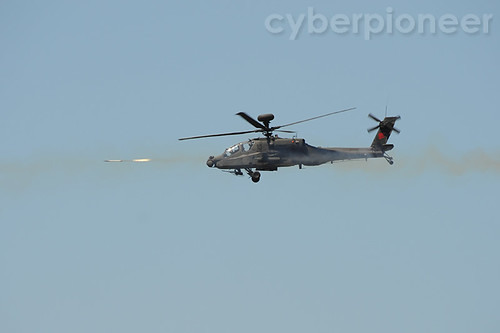
For the 23 SA personnel, the highlight of their exercise was their Field Artillery Training Evaluation Programme (FATEP) evaluation. Besides the HIMARS, other SAF weapon systems, including the Apache AH-64D Attack Helicopters and Artillery Hunting Radar (ARTHUR), were also in action at the exercise. Outside the unilateral training, our men also participated in an integrated air-land exercise with the US Army and Air Force.
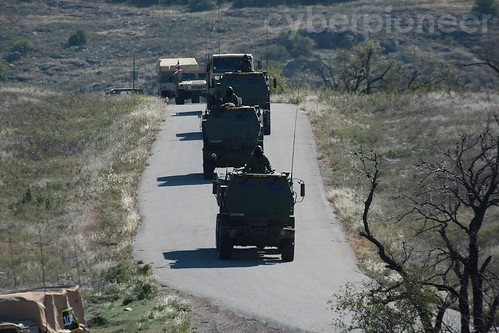
Commanding Officer of 23 SA, LTC Vincent Koh, also commended his soldiers, “The different terrain poses challenges to the crew – they have to find new launcher hides, new firing points and deployment areas. They also have to travel very large distances in the given short time. The men’s ability to quickly adapt so impressed the evaluators that we were viewed as an operational battery rather than just a training battery.”
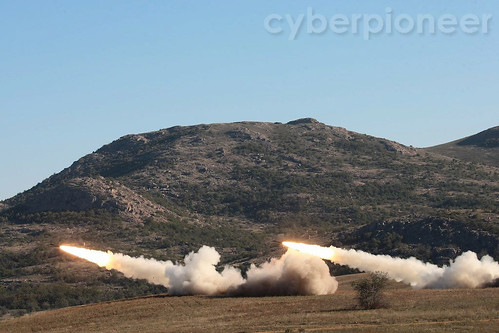
During the exercise, Singapore's Strike Observer Mission (STORM) teams were able to not only call for fire from SAF weapons platforms but also the US operated Paladin and F-18 fighter aircraft. Similarly, the US Fire Support Teams (FIST) proved their capability when they received support from the SAF platforms. In future battlefield, such integration can prove decisive.
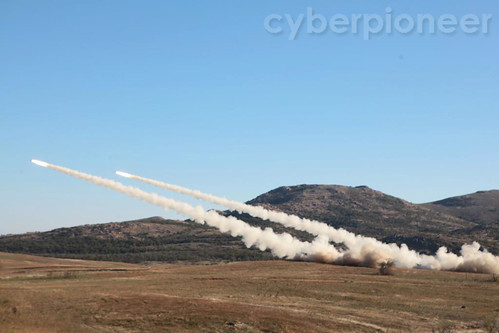
More Than Meets the Eye

Launching the rockets is more complicated than a ‘push button’ procedure, as there are many steps leading up to the launch. During an actual operation, the process of receiving the fire mission starts at the Division Strike Centre (DSC) where the potential targets and mission objectives are determined. The actual targets are identified by sensors such as those operated by recce forces or carried in Unmanned Aerial Vehicles (UAVs). The DSC sends the fire mission to the battery command post which will assign the mission to the appropriate platoon for execution. Prior to launch, the HIMARS launchers need to first move into their positions in the field; with their crews taking great care to conceal their launchers to avoid detection by the hostile forces. Upon receiving the mission, they move out into the open to unleash their ‘steel rain’.

While the live-firing is expected to proceed like clock work in an actual operation, precautions are taken during a training exercise as safety is paramount. The position safety officer involved is responsible for the safety of the firing. Prior to launch, the firers confirm their calculations with the position safety officer and the battery command post to ensure that the rockets will land within a safe area. Sentries are positioned along the roads to ensure that no vehicles pass under the path of the rockets.
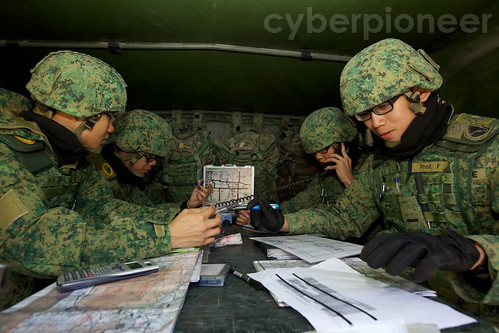
Strengthening Bilateral Ties
Chief of the US Army’s Field Artillery Branch, Brigadier-General (BG) Brian J. McKiernan, said:
The bilateral live - firing proved to be a unique learning opportunity for both Singapore HIMARS operators and their US counterparts operating the Paladin Howitzers. CPT Brian McCoy, ‘A’ Battery Commander, 2-5th Field Artillery shared:
Pictures by Vishnu Prem, from Cyberpioneer. See also Exercise Forging Sabre.
From 16 October to 4 November, the HIMARS operators of 23rd Battalion, Singapore Artillery (23 SA) showed their mettle at Exercise Daring Warrior 2012 held in Fort Sill, Oklahoma - the third HIMARS live-firing exercise conducted since the platform was delivered to the SAF in 2010. Exercise Daring Warrior was valuable opportunity to learn from and train with the US Armed Forces.
[nomedia="http://www.youtube.com/watch?v=uq2TBcq6gW4"]Barrage - High Mobility Artillery Rocket System - YouTube[/nomedia]
The 2-day bilateral live-firing exercise involved the SAF’s HIMARS and Apache AH- 64D Attack Helicopters; while the US forces included their fighter aircraft (F-16 and F-18), M109A6 Paladin Self-Propelled Howitzers, and Ground Liaison & Targeting teams.

For the 23 SA personnel, the highlight of their exercise was their Field Artillery Training Evaluation Programme (FATEP) evaluation. Besides the HIMARS, other SAF weapon systems, including the Apache AH-64D Attack Helicopters and Artillery Hunting Radar (ARTHUR), were also in action at the exercise. Outside the unilateral training, our men also participated in an integrated air-land exercise with the US Army and Air Force.

Commanding Officer of 23 SA, LTC Vincent Koh, also commended his soldiers, “The different terrain poses challenges to the crew – they have to find new launcher hides, new firing points and deployment areas. They also have to travel very large distances in the given short time. The men’s ability to quickly adapt so impressed the evaluators that we were viewed as an operational battery rather than just a training battery.”

During the exercise, Singapore's Strike Observer Mission (STORM) teams were able to not only call for fire from SAF weapons platforms but also the US operated Paladin and F-18 fighter aircraft. Similarly, the US Fire Support Teams (FIST) proved their capability when they received support from the SAF platforms. In future battlefield, such integration can prove decisive.

More Than Meets the Eye

Launching the rockets is more complicated than a ‘push button’ procedure, as there are many steps leading up to the launch. During an actual operation, the process of receiving the fire mission starts at the Division Strike Centre (DSC) where the potential targets and mission objectives are determined. The actual targets are identified by sensors such as those operated by recce forces or carried in Unmanned Aerial Vehicles (UAVs). The DSC sends the fire mission to the battery command post which will assign the mission to the appropriate platoon for execution. Prior to launch, the HIMARS launchers need to first move into their positions in the field; with their crews taking great care to conceal their launchers to avoid detection by the hostile forces. Upon receiving the mission, they move out into the open to unleash their ‘steel rain’.

While the live-firing is expected to proceed like clock work in an actual operation, precautions are taken during a training exercise as safety is paramount. The position safety officer involved is responsible for the safety of the firing. Prior to launch, the firers confirm their calculations with the position safety officer and the battery command post to ensure that the rockets will land within a safe area. Sentries are positioned along the roads to ensure that no vehicles pass under the path of the rockets.

Strengthening Bilateral Ties
Chief of the US Army’s Field Artillery Branch, Brigadier-General (BG) Brian J. McKiernan, said:
“We have a lot of experience training with and learning with the Singapore Armed Forces. Many of their officers come to our professional military education courses here at Fort Sill, and they perform exceedingly well. It’s not uncommon to find them scoring at the top of their classes and graduating with honours from all of our instruction.”
The bilateral live - firing proved to be a unique learning opportunity for both Singapore HIMARS operators and their US counterparts operating the Paladin Howitzers. CPT Brian McCoy, ‘A’ Battery Commander, 2-5th Field Artillery shared:
“To combine artillery fire with close air support as well as helicopters and to do that on a bilateral level is something we don’t get to do quite often. From that standpoint, it is quite a unique and exciting exercise for us. It has also been a unique experience for me personally to understand more about Singaporean culture and for us to share about our culture. For most of my soldiers, this is their first interaction on an international level so it has been a good experience for them as well.”
Pictures by Vishnu Prem, from Cyberpioneer. See also Exercise Forging Sabre.
Last edited:


